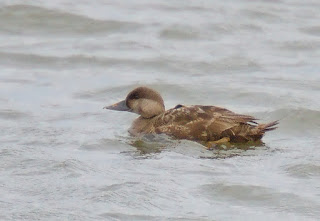One of the traditional signs that summer is on its way in Great Britain is the letter in the newspaper that claims that the voice of the cuckoo has been heard in the land. It has to be just about the most distinctive bird call there is, sounding like the name of the bird.
However, it is not heard in the countryside as often as it used to be, and it is now on the “red list” of endangered birds as recorded by the RSPB (Royal Society for the Protection of Birds). There are reckoned to be fewer than 20,000 breeding pairs in the whole country in any one year, and that could be a large overestimate.
The cuckoo (Cuculus canorus) is about the size of a dove at around 33 centimetres in length. Adult males are grey on the head and upper body, and the chest is white with grey bars. The wings and tail are mostly grey. Young birds, and some females, have somewhat browner plumage. In flight, cuckoos can easily be mistaken for sparrowhawks.
The familiar “cuckoo” call is uttered only by male birds, who arrive in Britain from Africa in mid-April, some days before the females. The female call is more like a chuckle, similar to that of the woodpecker.
Cuckoos are more likely to be found in southern and central England than elsewhere in the UK, and prefer woods, parkland and reed beds to other habitats.
The cuckoo is renowned for being a social parasite, in that it does not build a nest for itself but uses that of another bird. A female cuckoo is quite likely to choose a nest that belongs to the same species that she was raised by herself. This is probably going to be one of about 20 species of songbirds, with meadow pipits, dunnocks and robins being frequent victims. However, cuckoo eggs have been found in the nests of more than 150 bird species.
Cuckoo eggs are quite small in proportion to the size of the bird, and the shells tend to be thicker than those of other birds. This makes it possible for the female cuckoo either to lay her egg directly in the “host” nest or to lay it elsewhere and drop it into the nest where it will not break if dropped from a height (although it could break any other eggs that are already there). She will observe when adult birds leave a nest unattended for just a few seconds and take her opportunity. If undisturbed, the cuckoo may remove eggs from the host nest. She will only ever lay one egg in a nest, but may repeat the trick as many as 25 times during the breeding season.
Not all “host” birds fall for the cuckoo’s trickery, and it could be that a bird remembers a previous experience and is on the lookout for a repeat performance. Many cuckoos are chased away from nests despite their greater relative size, and some birds will eject a cuckoo’s egg if they discover it, or abandon a “violated” nest and start again elsewhere. Some redstarts have been known to cover all the eggs in a clutch, their own as well as that of the cuckoo, with a new lining and start laying a fresh clutch on top.
However, when the trick works and a cuckoo chick is hatched in the nest of another species, its instinct, soon after hatching, is to ensure that it has the nest all to itself. It is able to throw from the nest any unhatched eggs or nestlings that belong to the unwitting foster parents, this instinct being strong for three or four days. It will now receive all the food that the parent birds would have expected to feed to a whole family of their own offspring, and thus grows rapidly. The young cuckoo will demand food for several weeks after it has left the nest, which is far longer than the foster parents would have done had they been raising their own flesh and blood.
When fledged, the cuckoo feeds mainly on hairy caterpillars, a food source that is clearly seasonal, as these will pupate later in the summer. Cuckoos may fly south as early as mid-July, and will certainly have gone by mid-September. Young birds tend to leave later than adults who have bred during the spring or early summer.
One wonders if cuckoos would really be such welcome visitors, from the human perspective, if they had a less pleasant call that is so easily transferred to musical expression, particularly on the oboe. However, the decline in their numbers, down by some 60% since the 1960s, is a cause for concern whatever the species and whatever its habits, and we need to do whatever we can to preserve the habitats of this remarkable bird.
© John Welford





















